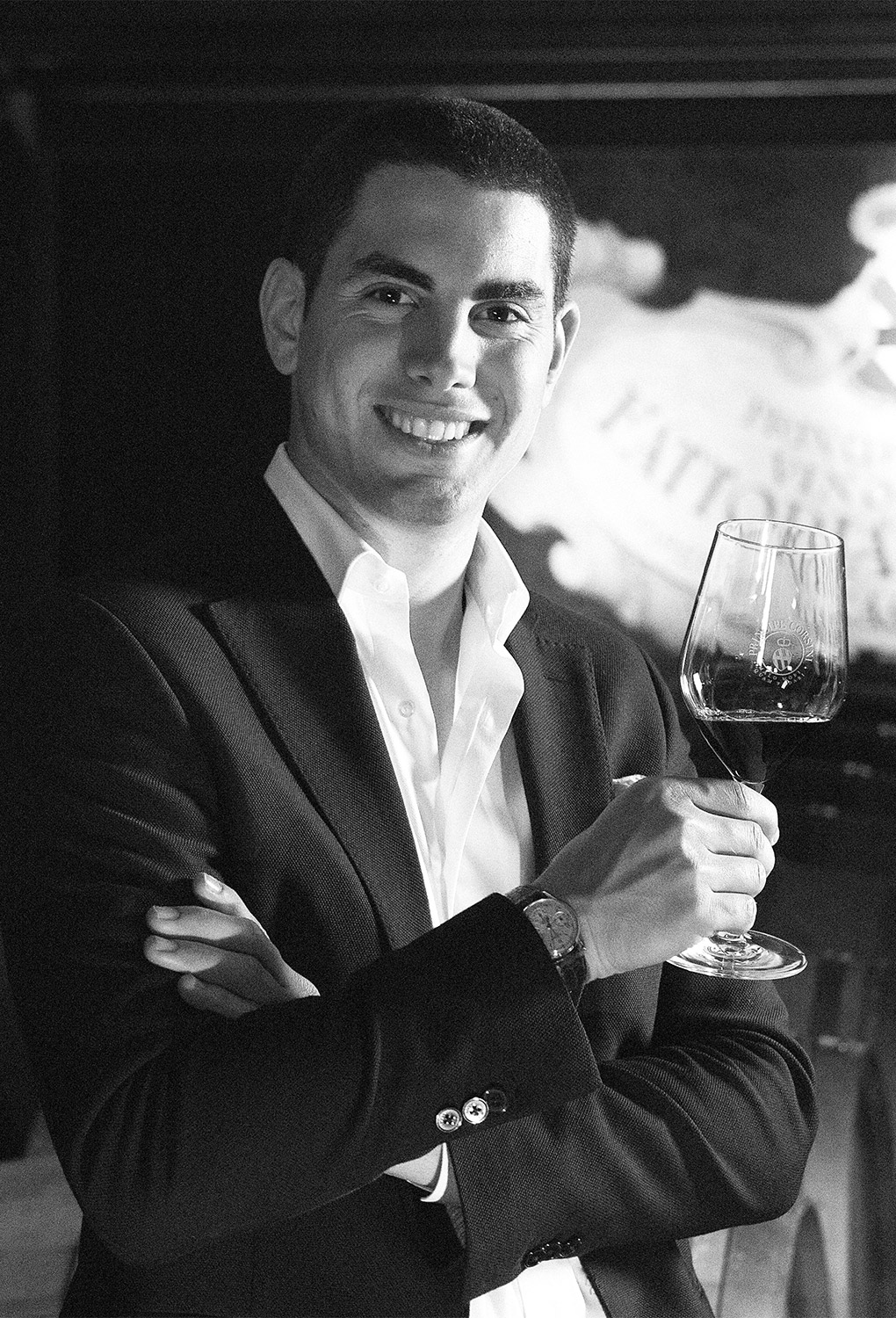
PER FILIPPO
The legacy of a noble son lives on in the heartland of Tuscany.
Editor’s Note: This story is published in The Florence Issue of Life & Thyme Post, our exclusive newspaper for Life & Thyme members. Get your copy.
Ancient stone walls give way to rolling green hills as I catch the last glimpse of Florence in the rearview mirror of our taxi. After a few days in the heart of the city, the stillness of the Tuscan countryside offers a stark contrast. How many people have painted this same expanse, I wonder. Oils may have the best chance at capturing the rolling grasses and lines of vineyards that seem to stretch to eternity, but I have to believe that any reproduction of this could only capture the beginning of what it feels like to have a valley like this open itself to you.
Pulling off the highway, we quickly dip into the town of San Casciano in Val di Pesa. It looks more like a postcard than a town, nestled among this landscape. As we near our destination, I finally see the hilltop villa that was the subject of a recent Google image search.
Gaetano Arnone stands in the driveway, directing the taxi like an air-traffic controller. He welcomes us to Villa Le Corti, and it all finally starts to feel real.
Only a few weeks prior, I had never met Gaetano. The first time we speak is on Zoom. He’s in a hotel room in New York, sitting against a yellow painted wall. Pushing past the pleasantries, he starts to tell his own story.
Arnone was raised in an Italian-American family in Orange County, California. After moving to New York, he spent 10 years working his way up through the kitchen ranks, before eventually becoming an executive chef at Otto Enoteca Pizzeria, and then losing his job when the pandemic shut down the city. With nothing keeping him in New York, Arnone packed up his life and moved to Tuscany with his wife, Meigan, and dog, Radio, to the home of an old friend he once met in the kitchen at Babbo.
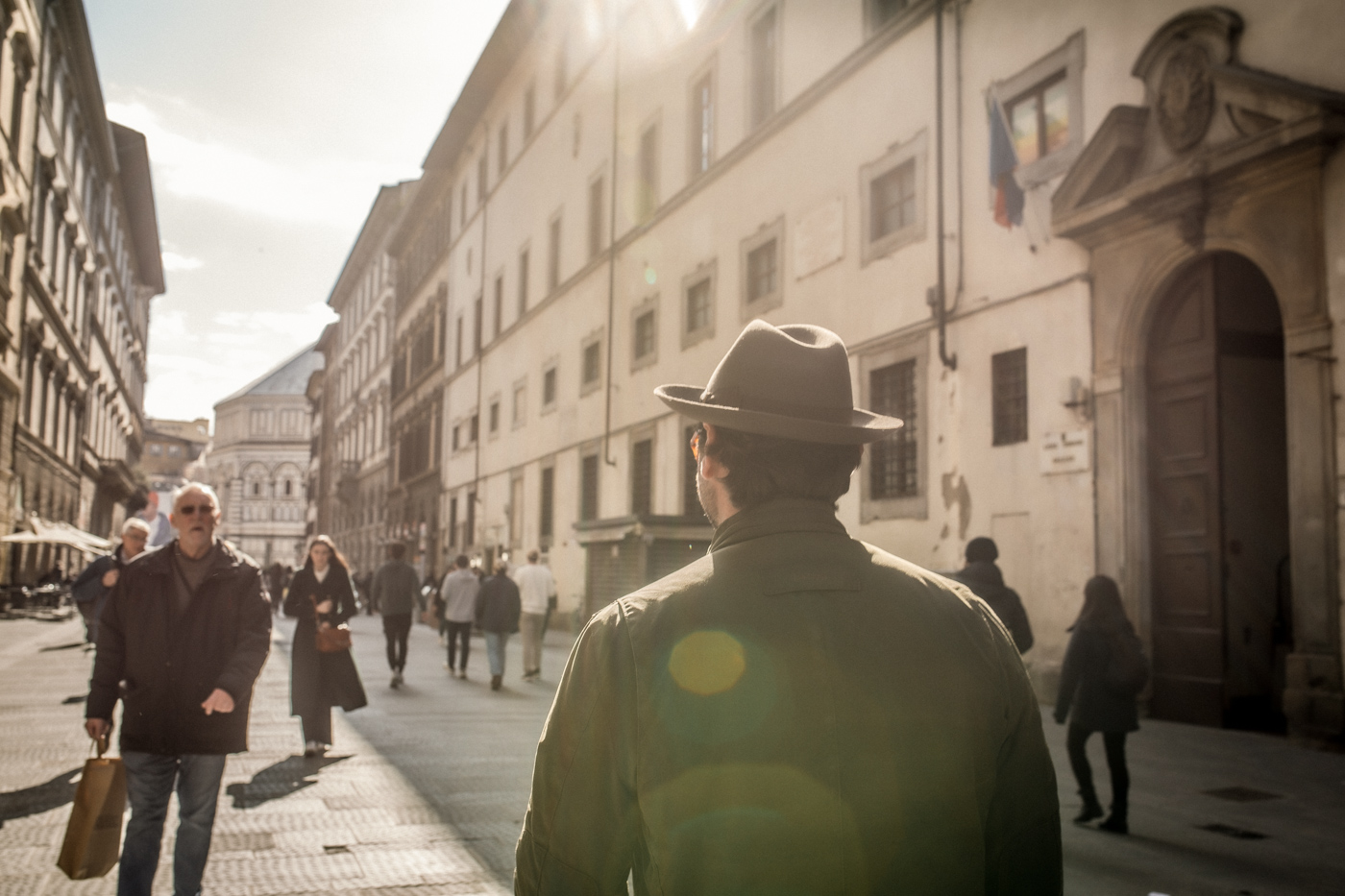
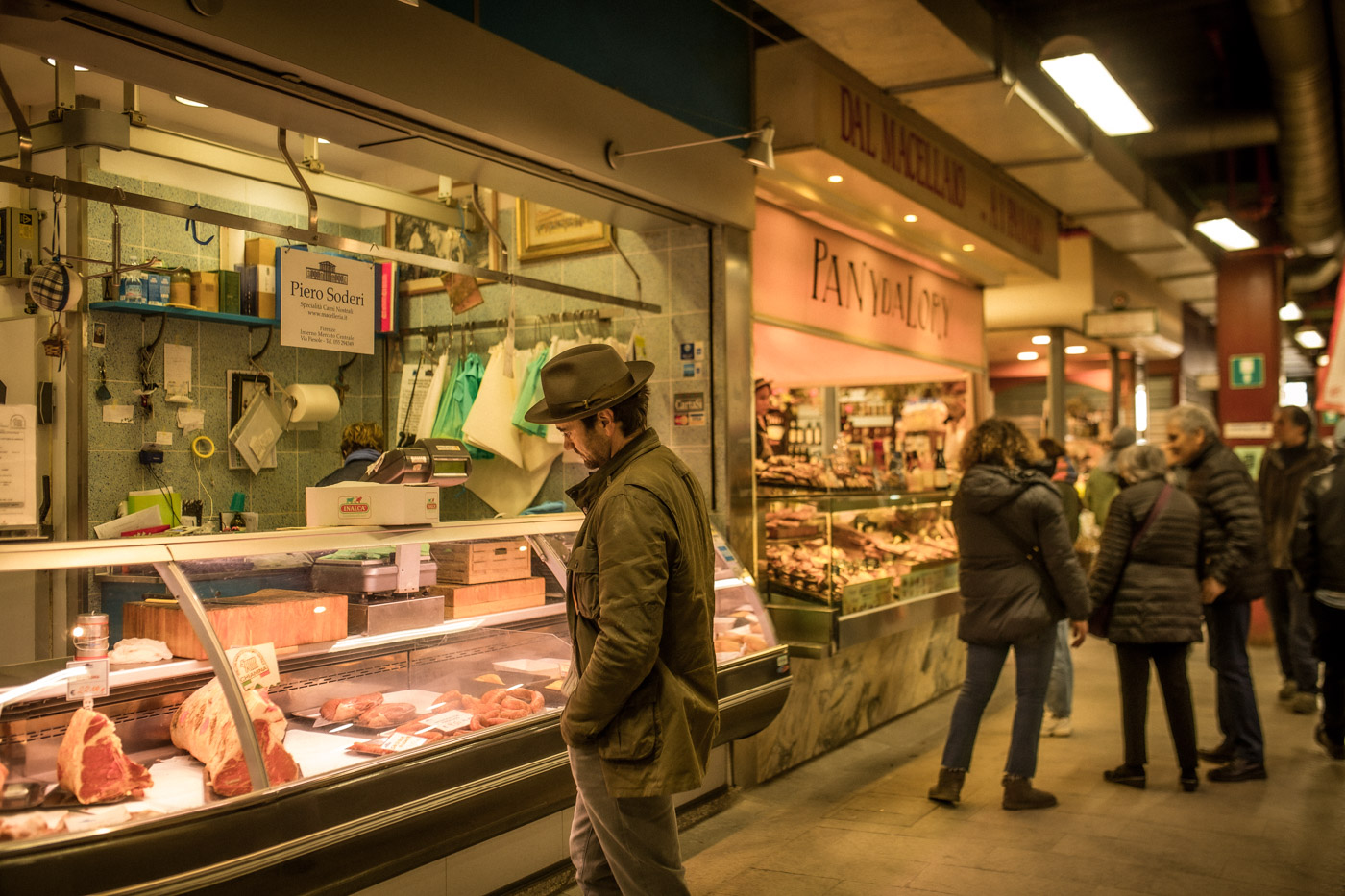
At Babbo, the summer of 2015 was marked by Arnone’s promotion to sous chef and the simultaneous arrival of a new intern. Dark-haired, clean-cut and Italian, the intern introduced himself as Filippo, claiming the two had a mutual butcher friend in an Italian town of 900. Without another question, Arnone took Filippo under his wing.
Filippo was a natural at Babbo. He weaved his way through the tight kitchen like he had grown up there, and charmed everyone he came across. A few weeks after Filippo’s arrival, Arnone finally asked what his last name was. Corsini, he said. The name rang a bell for Arnone, who registered it as old, and asked if it was Florentine. Filippo confirmed both, and left it at that.
But calling it an old name is an understatement for the Corsini name, which Arnone quickly discovered. The name belongs to an ancient Florentine family, with over nine centuries of history. Among their ranks have been a pope (Lorenzo Corsini who held tenure under the name of Clement XII), a deputy in the kingdom of Italy (Tommaso Corsini), a prince (Filippo IX), and more. Filippo’s own father, Duccio Corsini, holds the title of Duke of Casigliano, which made Filippo a prince.
But Corsini never let any of this on. He invited Arnone back to his home, promising him a good meal and good wine. He talked about a recent trip to Argentina and how he asked his father for some rows in the family’s vineyard to try new biodynamic techniques he learned of. Corsini explained how he used the moon to regulate his harvest cycle and plant produce between the rows.
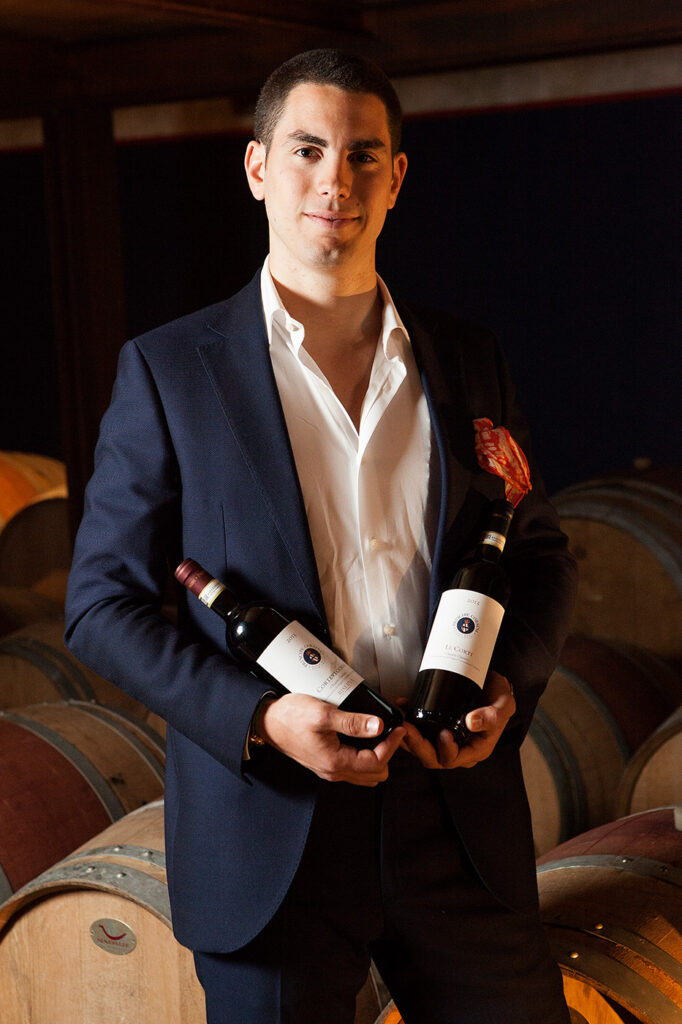
The summer flew by, with Corsini playing practically every role in the restaurant. From his time at the dish pit, to hosting in the front, somehow he was good at everything. By the time fall arrived, Arnone and Corsini had grown close. There was a standing invitation for Arnone to come to the Tuscan family home. And even after Corsini left, they kept in contact, with Corsini sharing updates on his rows of grapes and how the first harvest was in the barrel already.
Then came a fall morning in 2016. It started as usual with Arnone arriving to work around seven a.m. He opened his phone to scroll through Instagram and saw a photo by Corsini’s sister of a subway station adorned with flowers. Not processing what he was seeing, Arnone kept scrolling to a photo of Corsini alongside himself, in the kitchen he was currently standing in. Reality began to sink in as he read the caption. On the evening of October 31, 2016, Filippo was killed by a truck while cycling in London.
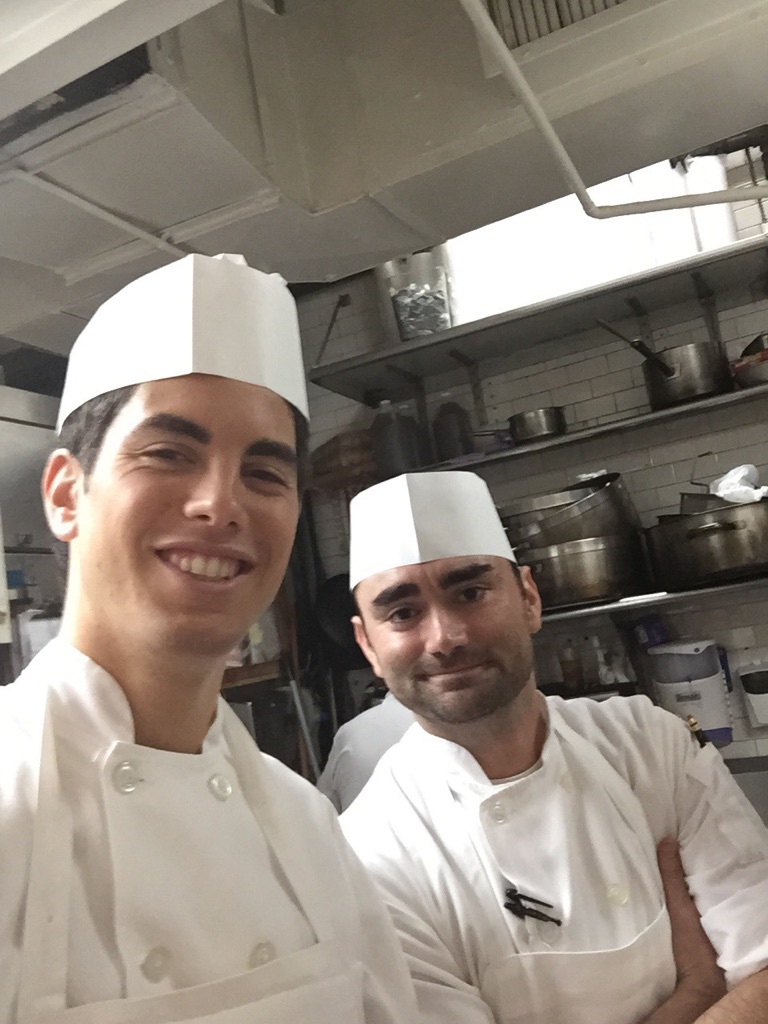
At the time, Arnone didn’t quite know what happened, but as he looked across the room and saw the sommelier in tears, it became clear that Filippo was no longer with them. Arnone remembers the rage he felt when he realized the world was robbed of Corsini’s potential.
The next time Arnone went to Italy, he made sure his first stop was to Villa Le Corti. Walking into the osteria that occupies the front of the winery, Arnone realized why Corsini was able to navigate Babbo like he was raised there. The restaurant was laid out in almost the exact way Babbo was; he had been tracing these routes and patterns with his feet since he was a child.
When Arnone introduced himself to the family he had heard so much about, he was greeted with tears. They had heard all about him and Babbo too. As Arnone and the Corsini family grasped for connection after loss, they caught each other in a moment wrought by Corsini’s impact on all of their lives.
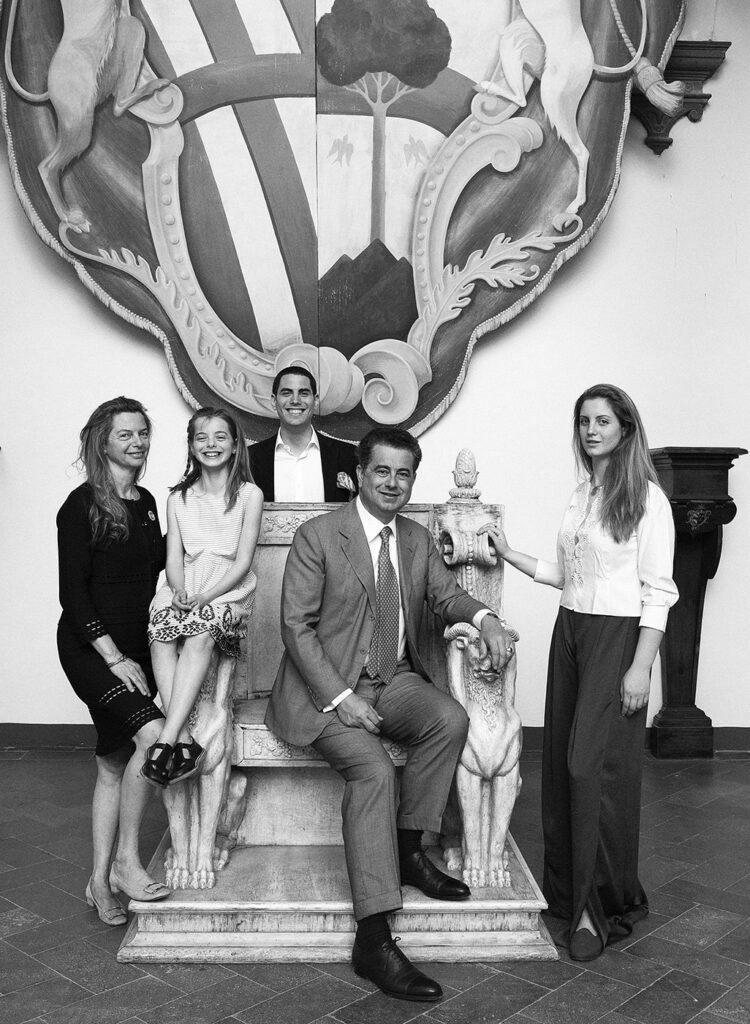
Years later, as Covid shut down New York City’s restaurant industry, Arnone found his mind drifting back to the Tuscan countryside. He had gone back and visited the Corsinis each time he returned to Italy, but he was now looking for something that looked less like a vacation and more like a sabbatical. With a few calls, he learned there was an elderly woman living on the Villa Le Corti property who was leaving town for a few weeks and needed someone to watch her dog. But after those two weeks, he never left.
Now, Arnone sits across from me in a cavernous meeting room in the back of Villa Le Corti. Through the door behind us is a collection of winemaking equipment, and in front, a dark hallway of oversized barrels. Living in a cottage on the property, he now runs its culinary program. He’s developing a garden and teaches cooking classes out of the medieval kitchen just down the hallway.
The garden is below the estate’s primary residence, overlooking neat vineyard rows. The land Villa Le Corti sits on has been part of the Corsini family since 1363 when it was purchased as farmland with a house and an olive mill. The Villa started to be built in the early 17th century, and is still the home of the Corsini family.
Walking up from the main entrance, the Villa opens into a two-story courtyard, with the family chapel tucked away behind a door in the entryway. On the main floor is a living museum of sorts, with interconnected formal rooms. The second floor holds the current living quarters, and the Corsini family archive that contains over 12,000 documents dating back to 1020. As Corsini’s mother, Clotilde, shows us around, the sound of his sister practicing violin ricochets around the stone walls.
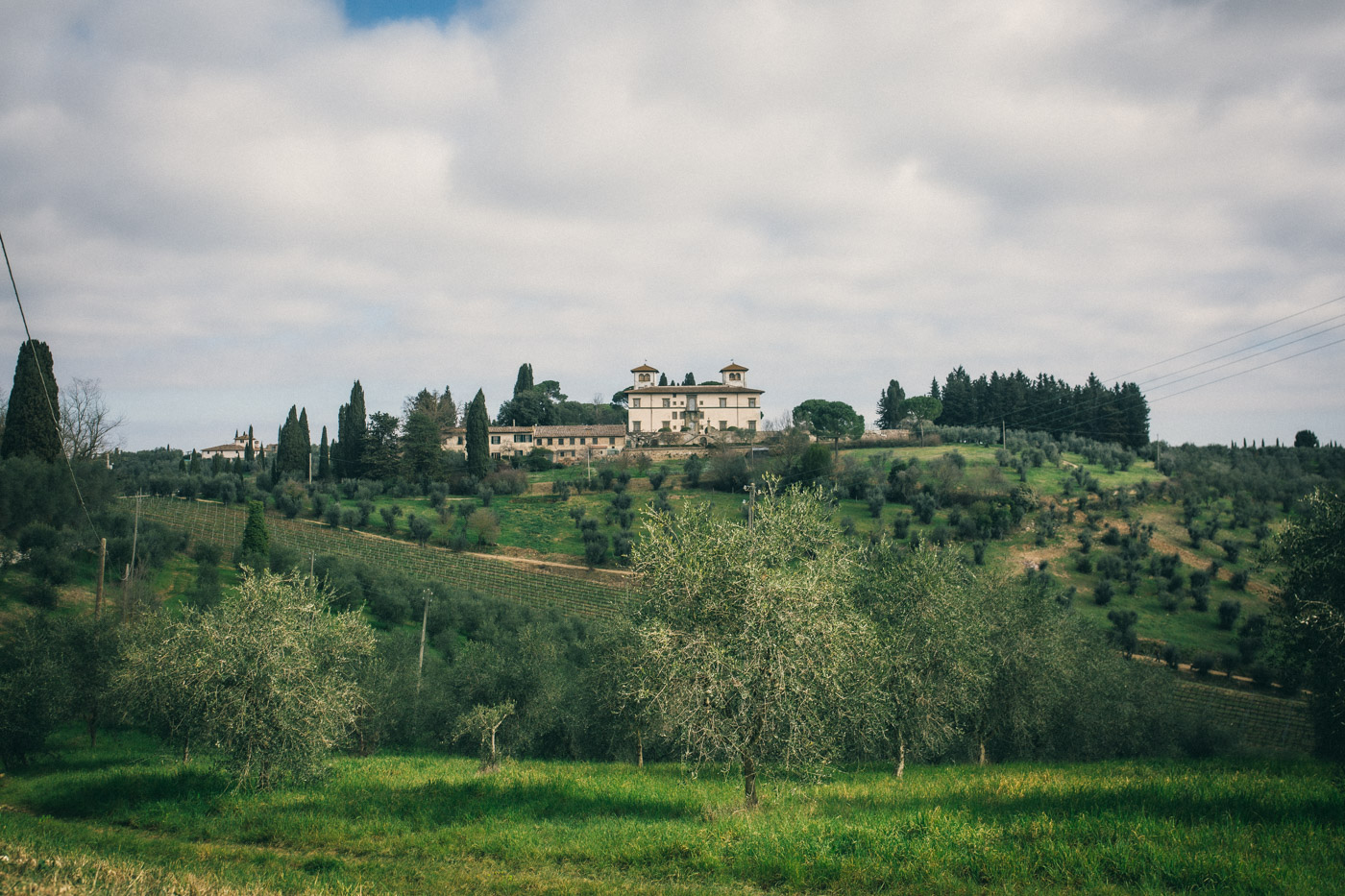
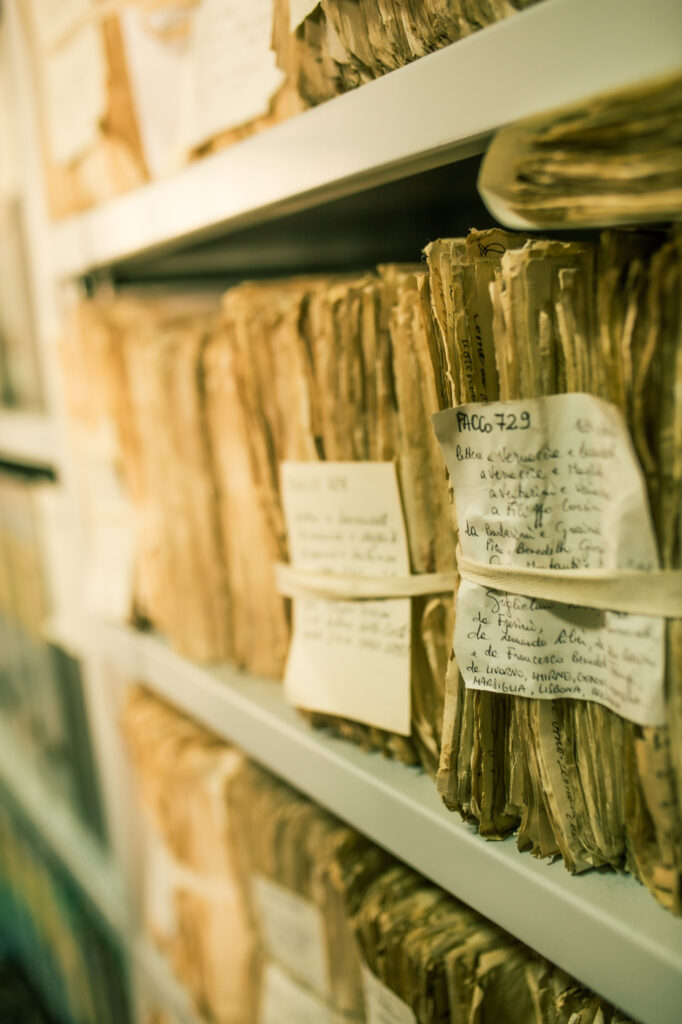
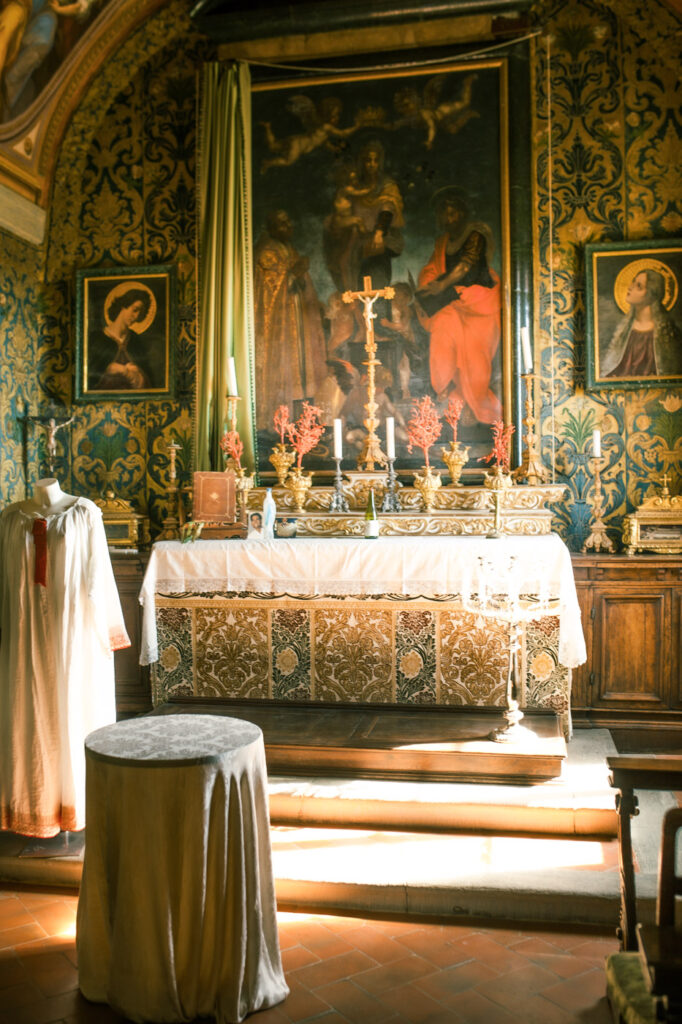
I can feel the years in this building as I walk around. The walls seem to sigh as a breeze moves around them and an occasional creak follows our footsteps. Although it was death that ultimately brought Arnone here, this place is so clearly full of life.
Later in the evening, we gather again in the historical kitchen for a meal Arnone is preparing. He’s invited friends from the surrounding Tuscan valley, and as he tends the fire that is intended for bistecca fiorentina, we fall into easy conversation between sips of wine and bites of bread. Duccio Corsini drops by to bid us goodnight before we take our places around a candlelit dinner table.
The evening draws late into the night as one bottle of Principe Corsini wine is opened after another. A handmade ravioli lands on the table, followed by charred radicchio, and bookended by the bistecca we all watched cook over the fire.
But then comes a pause as Arnone goes to open a bottle of Fico—Filippo’s wine. There’s a new weight in the air as he talks about Filippo, honoring his memory as he pours and toasts to him.
Watching the wine tumble out of the bottle and into the waiting glass, this is something entirely different from the Chianti the region is known for. The candlelight bounces off the wine, bringing out the color of pomegranates. Swirling the wine around, it moves without burden or weight, dancing around the walls of the glass.
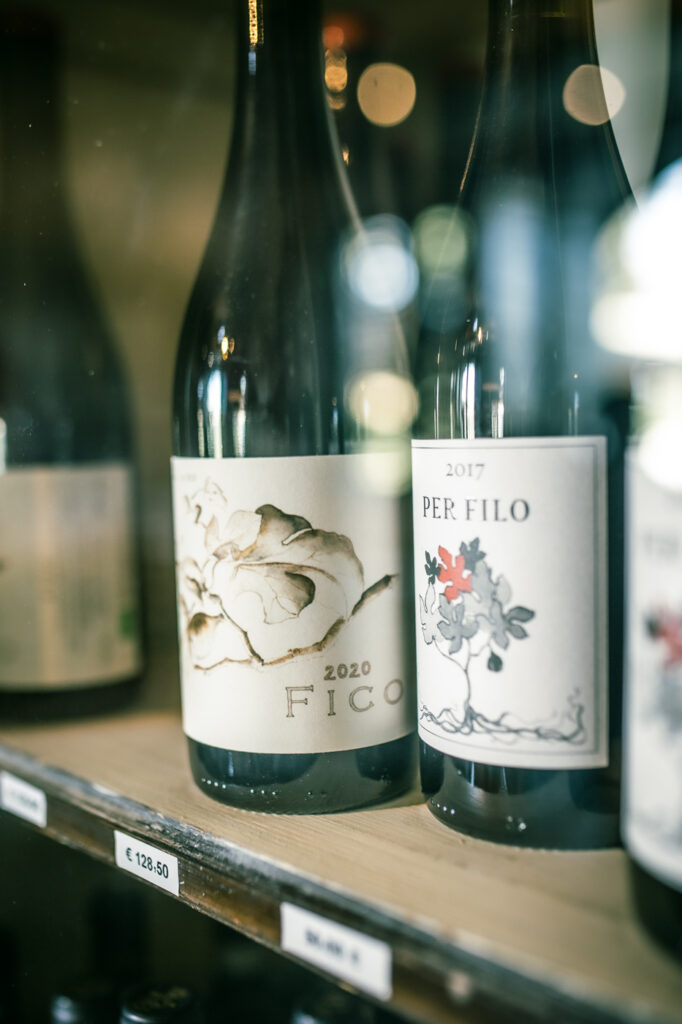
Fico is a product of Filippo’s drive to learn. In 2015, he spent time with producers in Argentina, immersed in winemaking using techniques like hand-sorting grapes, and using indigenous yeast and open-top fermentation. Bringing his education back to Villa Le Corti after his time at Babbo, Filippo considered what it would look like to make a biodynamic wine on the land he grew up on. Then, on a trip to Umbria, his aunt painted a watercolor of the fig leaves that became the label for Fico.
Filippo started with just six rows in the vineyard, and the first vintage of Fico was produced in 2015. It was processed with minimal human intervention, as well as a desire to not only respect, but highlight the land it came from. It is a physical expression of Filippo’s vision and philosophy.
Filippo is the reason we’re all here. Not just physically at this table, but in the sense that he’s the reason Arnone found a second life at the Villa, and why we were connected in the first place. We drink to Filippo, and to his life.
The next morning, we meet Arnone for a trip into town for a coffee. He has his dog in tow; they’re wearing matching Barbour jackets. The town of San Casciano consists of only a few streets, and at this hour of the day, it’s quiet. We tuck into a café for an espresso and cornetto before heading back to Villa Le Corti.
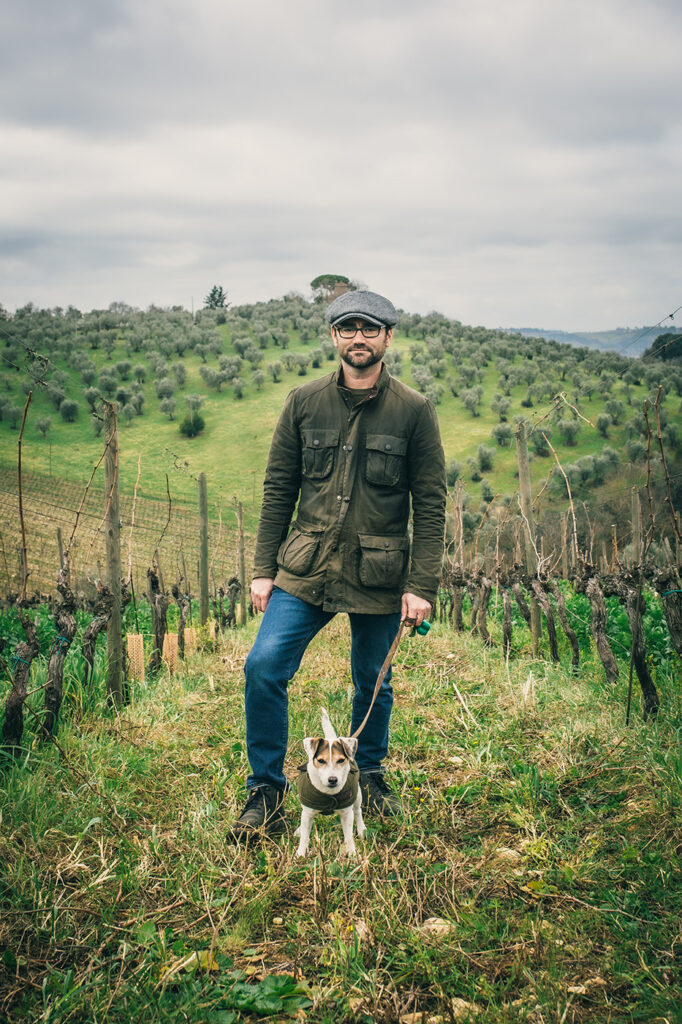
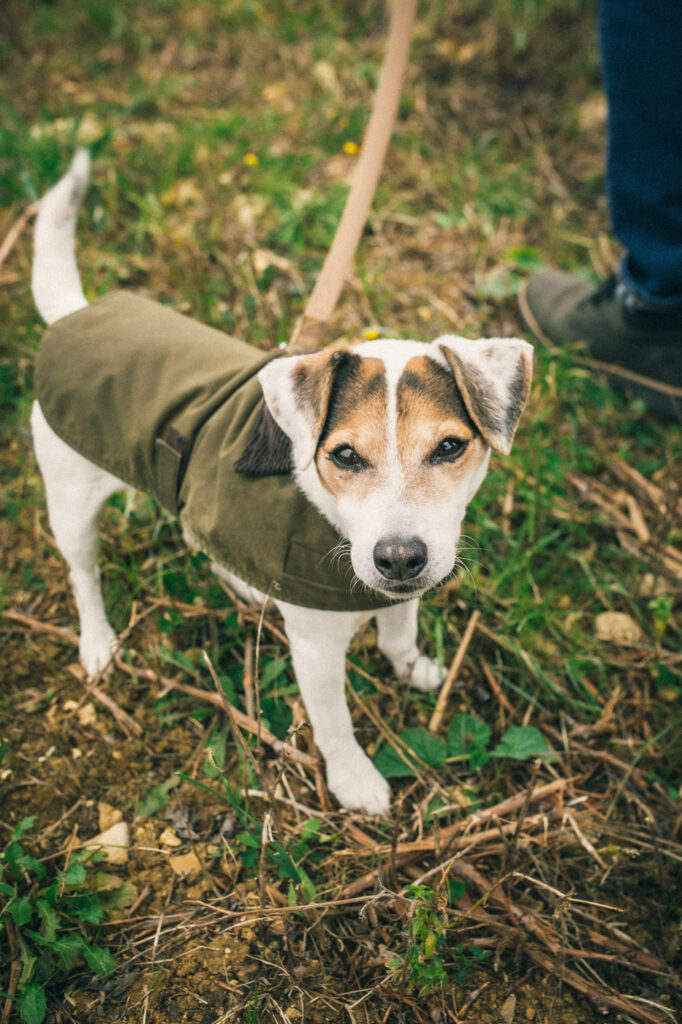
Arnone takes us into the vineyards. They’re on a steep incline and at the right angle, they look infinite. Walking past the rows, we come to a marked post that signifies the first of Filippo’s grapes. It’s here where he applied what he learned in Argentina and convinced a group of Italians to try something new. These rows are harvested by Filippo’s friends who come back every year to continue the tradition. His grapes go through a three-tier selection process, making the work tedious at times, but guaranteeing only the best goes into the bottle.
Guarding the rows is the fig tree Filippo planted to signify his stake. While it’s currently barren due to the season, its branches reach upward, stretching toward the sky. I can picture what the leaves will look like once they spring forth and resemble those emblazoned on the Fico label.
Heading back toward the house, we gather our things and start to say our goodbyes. With the taxi outside, I look behind the bar to the photo of Filippo and remember something Arnone said the day before.
“When you lose someone, you have a memory of them. You have a tangible, touchable memory that only is special to you. So if I can verbalize my memory of my friend to somebody new and tell them a story, and tell them a story in an environment that’s special to them, it’s a story,” Arnone said. “If they, in return, tell that story to somebody else, that story now becomes a legacy.”
“It’s like you’re holding this little fire of a legacy that could go out if you’re not careful,” he continued. “You have to steward it, and you have to bring it into the future. Because what he wanted to do was very big and he wanted to change things. And that’s what he did.”






Our comments section is for members only.
Join today to gain exclusive access.